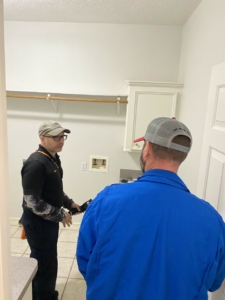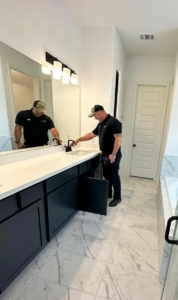Maintaining a lush, green garden is a labor of love – one that requires careful attention to watering and nourishment. Enter the residential irrigation system, a modern marvel that takes the hassle out of watering your landscape. In this blog post, we’ll explore what a residential irrigation system is, how it works, and why it’s essential to have it inspected regularly.
**What is a Residential Irrigation System?**
A residential irrigation system is a network of pipes, valves, sprinklers, and controllers designed to deliver water to your garden or landscape in a systematic and efficient manner. These systems come in various configurations, including drip irrigation, spray irrigation, and rotary sprinklers, allowing you to customize your watering strategy based on your garden’s unique needs.
**How Does it Work?**
At the heart of a residential irrigation system is the controller, which allows you to program watering schedules based on factors such as time of day, duration, and frequency. When it’s time to water, the controller sends signals to valves located throughout the system, which in turn open and allow water to flow to the designated zones. Sprinklers or drip emitters then distribute the water evenly across your garden, ensuring that every plant receives the moisture it needs to thrive.
**Why is an Inspection Important?**
1. **Optimal Performance:**
Over time, components of your irrigation system may wear out or become damaged, leading to inefficiencies in water distribution. Regular inspections allow you to identify and address these issues promptly, ensuring that your system operates at peak performance.
2. **Water Conservation:**
A well-maintained irrigation system is more efficient, reducing water waste and lowering your water bills. Inspections can help you identify and fix leaks, clogged nozzles, or other issues that may contribute to water loss.
3. **Plant Health:**
Proper watering is essential for the health and vitality of your plants. A malfunctioning irrigation system can lead to under-watering, over-watering, or uneven watering, all of which can stress your plants and make them more susceptible to disease and pests.
4. **Preventative Maintenance:**
By conducting regular inspections, you can catch small problems before they escalate into more significant issues. This proactive approach can save you time, money, and frustration in the long run by avoiding costly repairs or replacements.
5. **Compliance and Safety:**
Some municipalities have regulations governing the installation and maintenance of irrigation systems, particularly in areas prone to water shortages or drought. Regular inspections ensure that your system complies with local regulations and operates safely and efficiently.
In conclusion, a residential irrigation system is a valuable investment that helps you maintain a beautiful, healthy garden with minimal effort. By scheduling regular inspections, you can ensure that your system operates efficiently, conserves water, and promotes the health and vitality of your plants. So don’t wait until your garden is thirsty – schedule an inspection today and keep your landscape thriving all season long!




